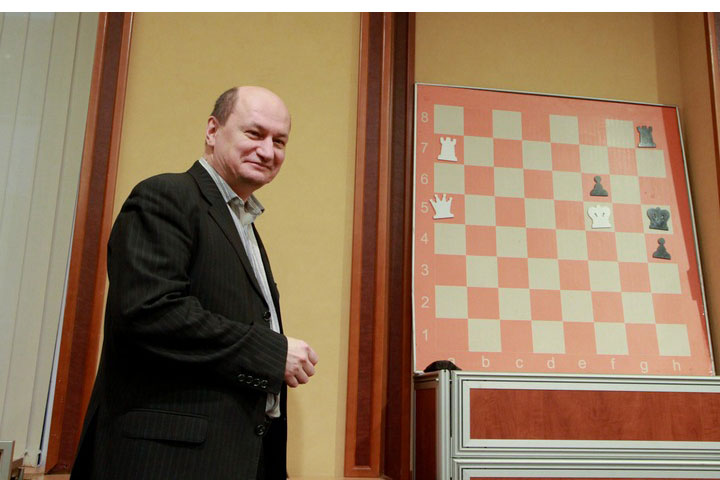The sealed envelope
Before you read on, try out the problem in the picture. It’s fun.
Play your moves on the live diagram
Moscow, Autumn 1977. The office of Chess in the USSR magazine is busy as a bee hive.
The occasion is special, it’s the 60th Anniversary of the October Revolution.
Articles are commissioned as much for chess content as propaganda. However, one place in the magazine is free from propaganda stuff. It’s the column for problems and endgame studies. At the desk sits Anatoly Kuznetsov, a renowned composer in his own right.
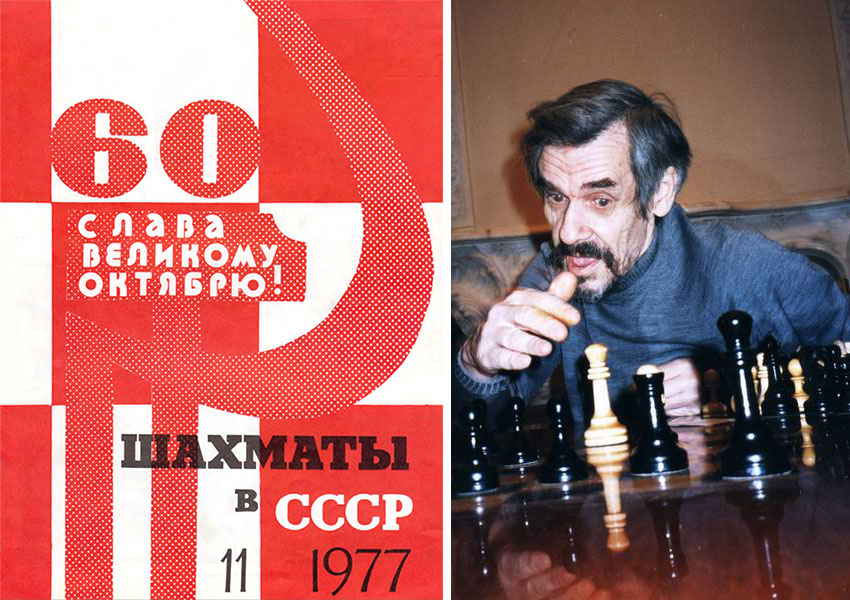
(Left) Image of the cover, Chess in the USSR, 11/1977 | (right) Anatoly Kuznetsov | Photo: chesspro.ru
Today there is a sealed envelope is lying on his desk. When he opens it, he finds an endgame study by an unknown composer from Kirov District. Kuznetsov regularly receives such work with a request to publish it in the magazine from all over the Soviet Union. Not all of them meet his standards. But this one displays the signs of a new talent. So he decides to put it up in the next issue of the magazine. When the young composer sees his work in print, his joy knows no bounds. He is sharing space with some of the greatest names in chess composition, Aleksandr Gulyaev, Ernest Pogosyants and Vasily Dolgov.
Ephemeral joy
Alas, the joy is short-lived. An alert reader spots a flaw in the study and it is refuted. Next year he tries again and Kuznetsov generously gives it another chance. No luck. Yet another solver finds a flaw and the study is “cooked”. Once bitten, twice shy. So goes the proverb. In this case it was, twice bitten, thrice shy. Our young man makes no third attempt. Other priorities take precedence in his life. Soon he specializes in plasma physics and finds a position in an institute of atomic energy.
Success at last!
He hasn’t forgotten his first love, though, and he gives it a shot, participating in a contest organized by Central Chess Club, in Moscow. He surprises himself and every one else by sharing first and second prize with Genrikh Kasparian.
The legendary composer is his idol and it was his work that had inspired him to take to endgame studies in the first place when he was a twelve-year-old. It’s only fitting that he is sharing honours with the great man.
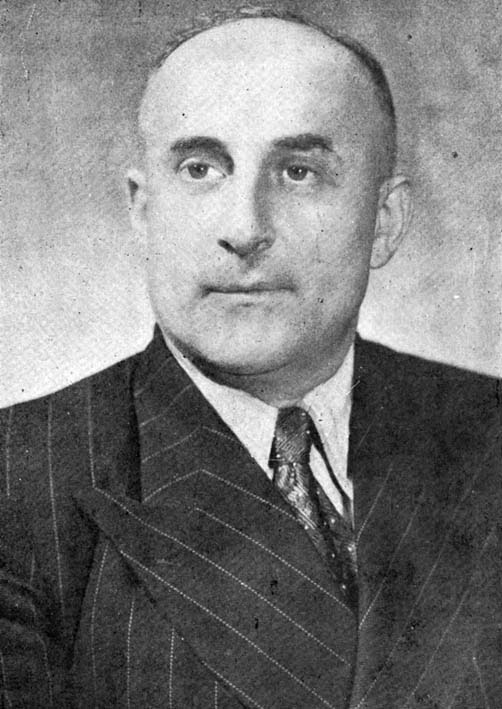
Photo: chesspro.ru
Meeting Roshal
Thus begins the odyssey of Oleg Pervakov in chess composition. His professional work brings him to Moscow. He meets Anatoly Kuznetsov who readily takes him under his wings. He also makes friends with fellow composers, young and old. Then comes the big break.
In 1995 Alexander Roshal asks him to join 64 Chess Review magazine. For Oleg, it’s a dilemma. He has a secure job, and he is doing very well in terms of career.

Photo: chesspro.ru
But then Roshal would not take no for an answer. Life in the editorial office of the magazine regularly brings him into contact with the best players in the world, Kasparov, Kramnik and others.
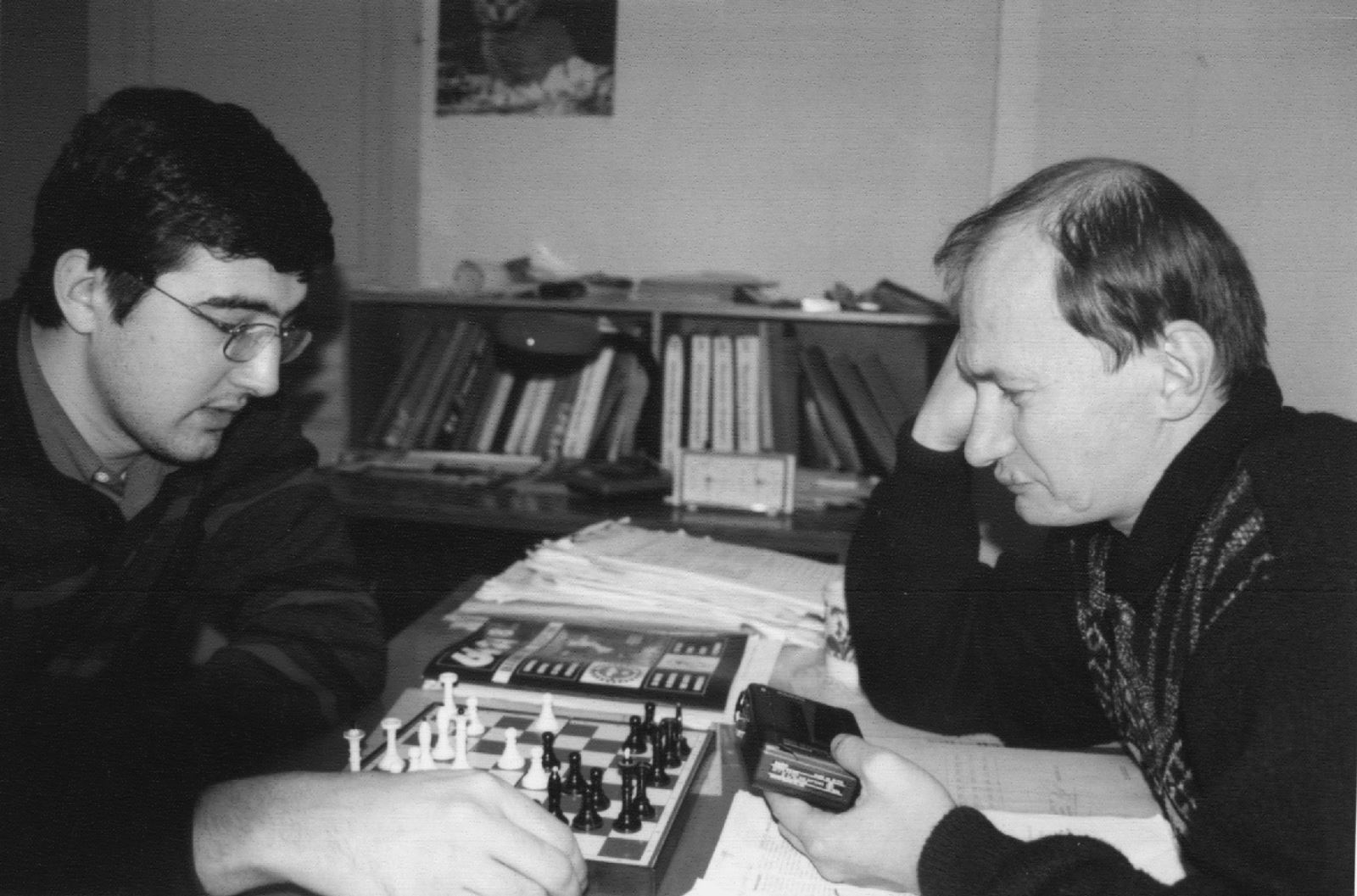
Pervakov with Kramnik (left) | Photo: Elk and Ruby
Meeting Smyslov and Dvorestsky
More importantly, he meets two extraordinary minds with whom he collaborates. The first is Vassily Smyslov, the seventh world champion. The grand old man treats Oleg with rare affection, and they work together on Smyslov’s collection of endgame studies.
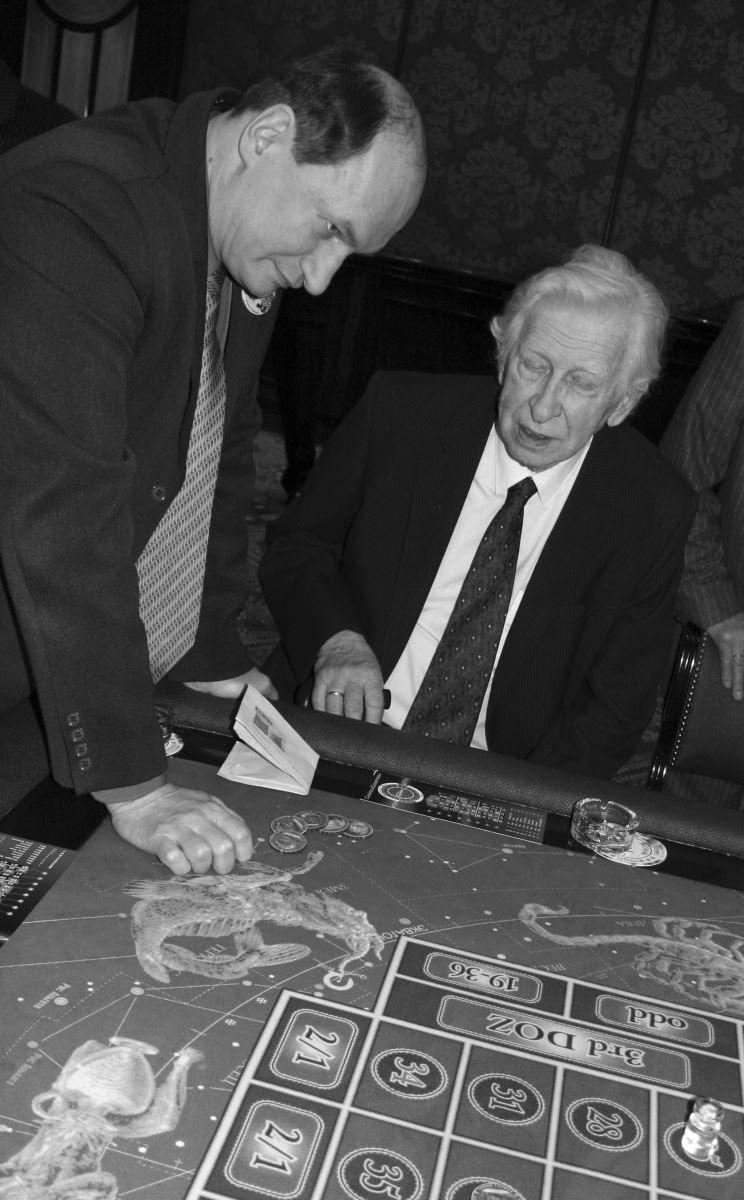
Pervakov with Smyslov (seated) | Photo: Elk and Ruby
The second is Mark Dvoretsky, the celebrated chess author and teacher. The two of them share the conviction that over-the-board players have a lot to learn and gain from endgame studies. Together they write, Studies for Practical Players, a work that is both instructive and enjoyable.
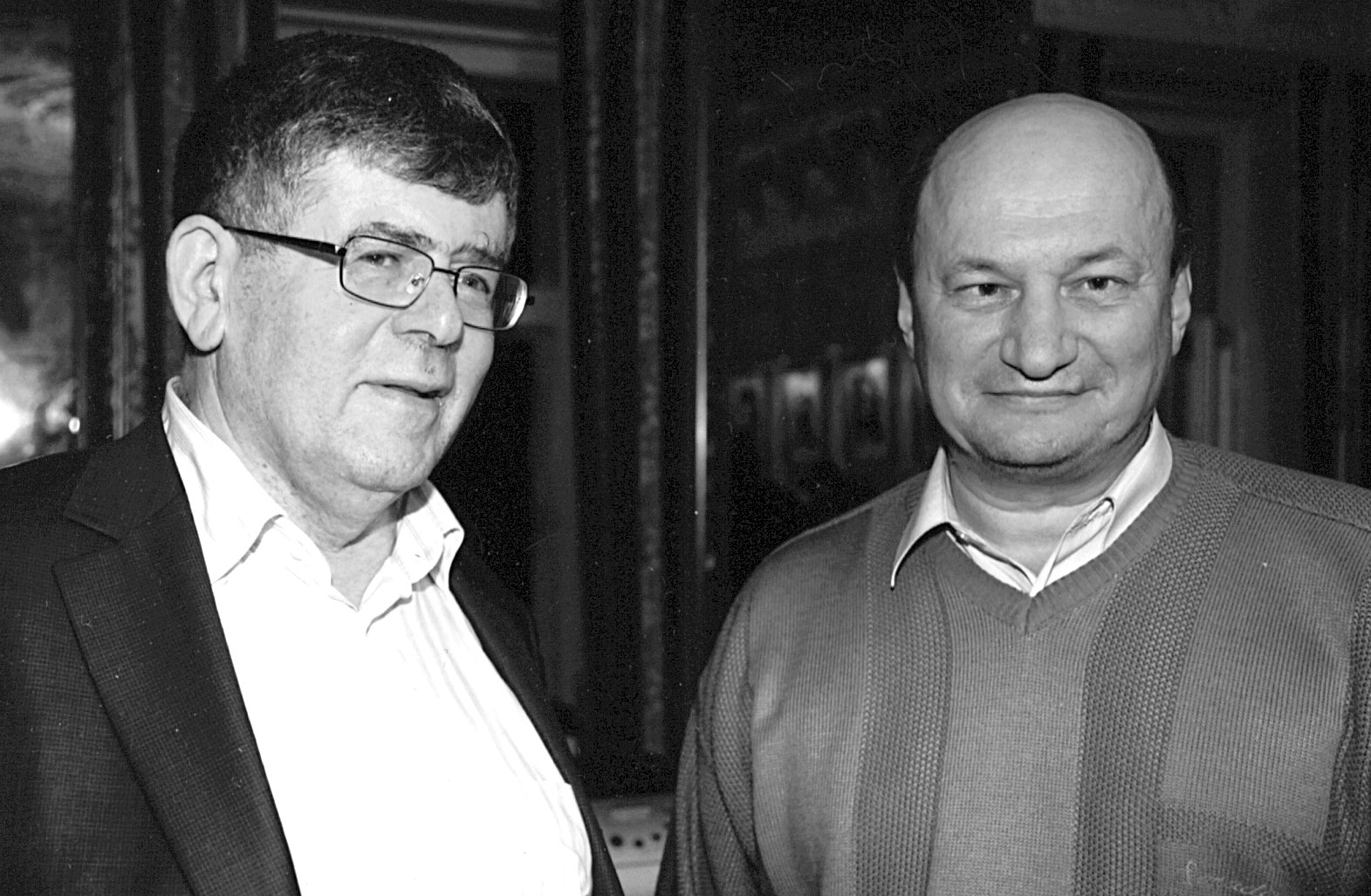
Dvoretsky and Pervakov (click or tap to expand) | Photo: Elk and Ruby
Then they are on to a second project, and the manuscript is ready for publication…when Oleg receives the sad news that Dvoretsky has passed away. He owes it to himself and to his late friend that their precious work should still see light of the day. That book has just been published with a moving tribute to the great master.
Among children
Pervakov wants children to take to problems and studies. So you would find him time and again among children encouraging them to solve positions. In the picture here he has given them a two-mover and waiting for someone to jump and shout, “I found it….”
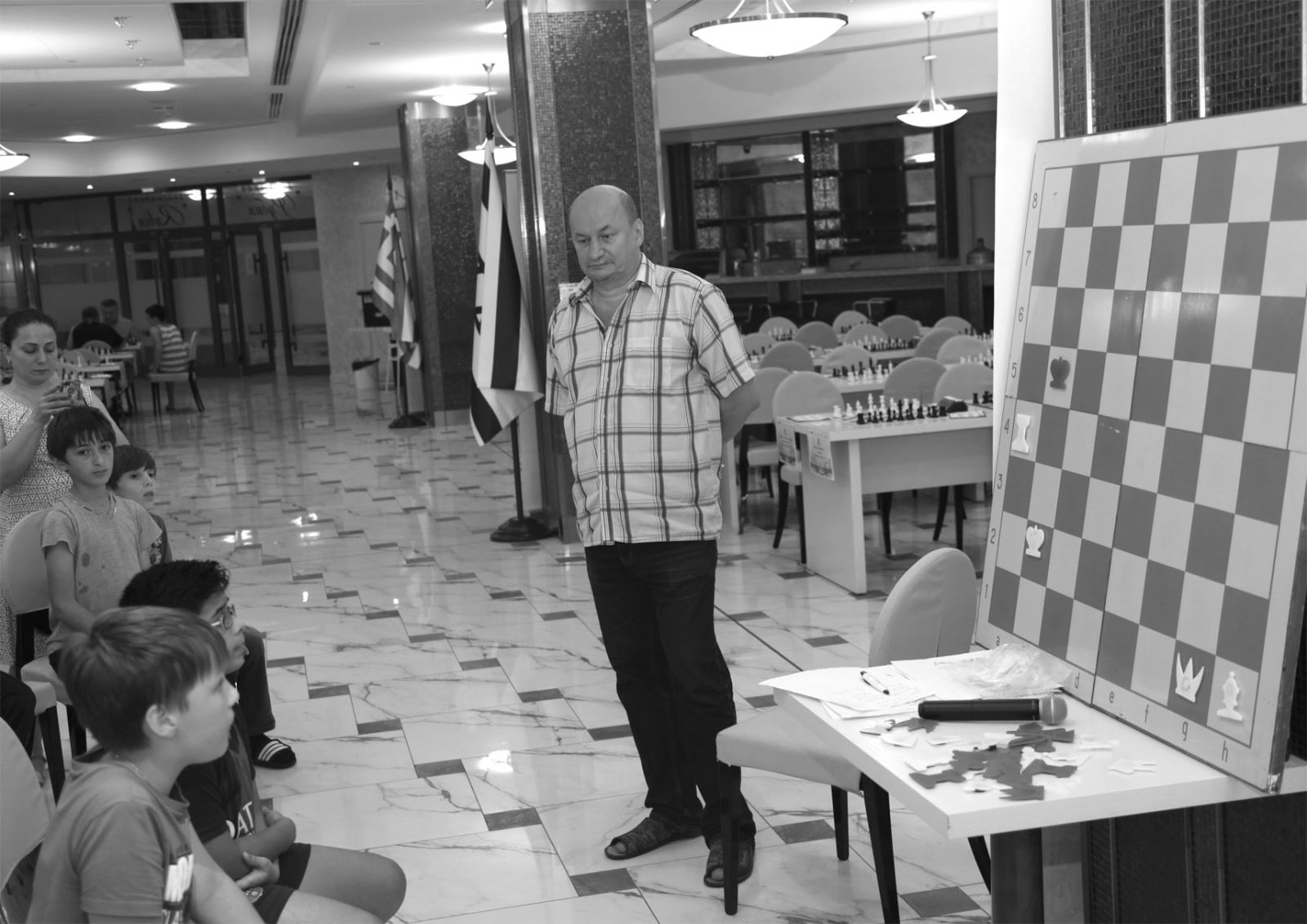
Pervakov lectures to children | Photo: Elk and Ruby
Dear reader, you can find it too and experienced solvers may not even need a board!
Next time we shall take a look at Pervakov’s studies.
They are a challenge to chess minds as Carlsen and Kasparov would acknowledge.
